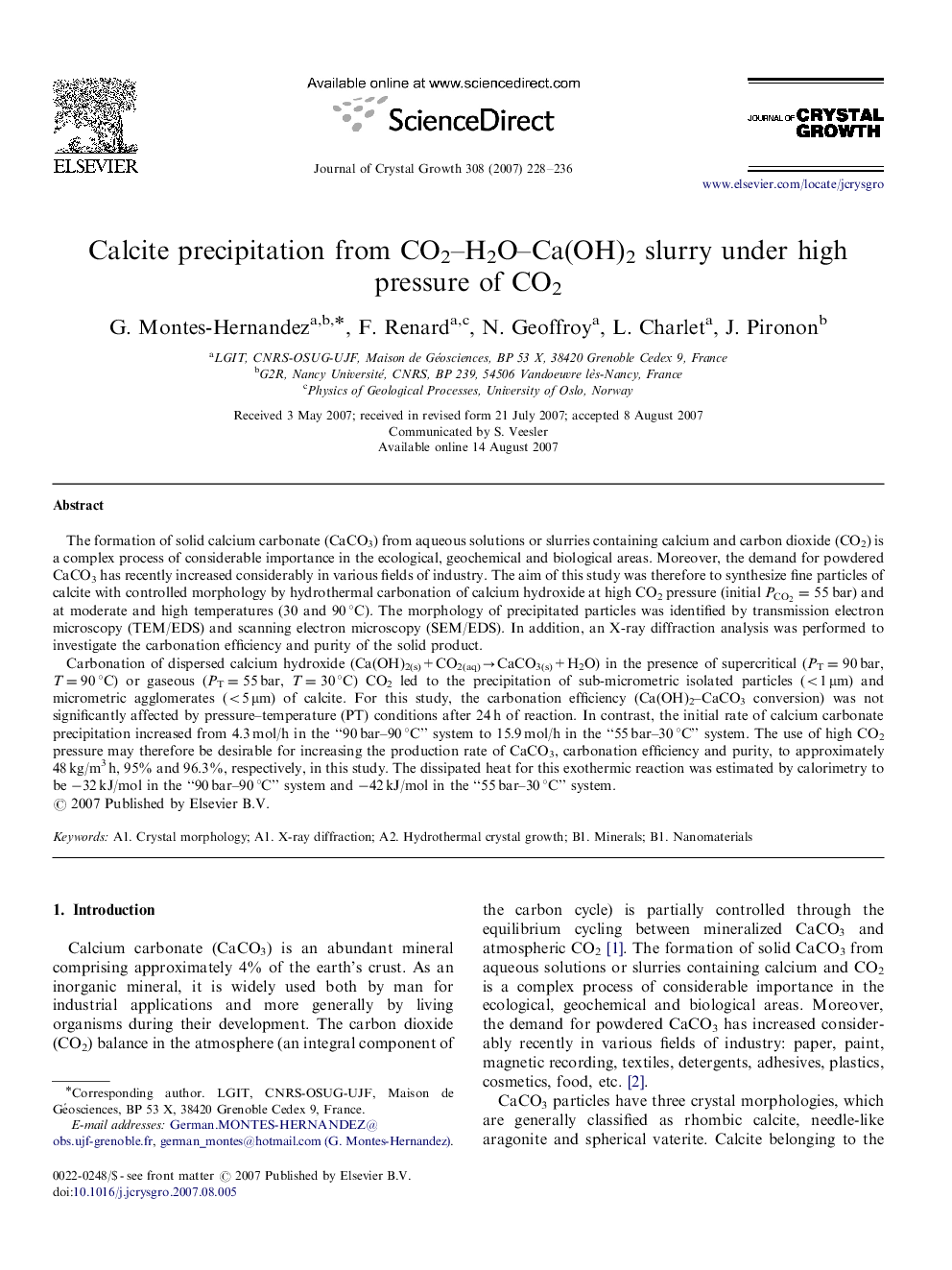| کد مقاله | کد نشریه | سال انتشار | مقاله انگلیسی | نسخه تمام متن |
|---|---|---|---|---|
| 1796175 | 1023737 | 2007 | 9 صفحه PDF | دانلود رایگان |

The formation of solid calcium carbonate (CaCO3) from aqueous solutions or slurries containing calcium and carbon dioxide (CO2) is a complex process of considerable importance in the ecological, geochemical and biological areas. Moreover, the demand for powdered CaCO3 has recently increased considerably in various fields of industry. The aim of this study was therefore to synthesize fine particles of calcite with controlled morphology by hydrothermal carbonation of calcium hydroxide at high CO2 pressure (initialPCO2=55bar) and at moderate and high temperatures (30 and 90 °C). The morphology of precipitated particles was identified by transmission electron microscopy (TEM/EDS) and scanning electron microscopy (SEM/EDS). In addition, an X-ray diffraction analysis was performed to investigate the carbonation efficiency and purity of the solid product.Carbonation of dispersed calcium hydroxide (Ca(OH)2(s)+CO2(aq)→CaCO3(s)+H2O) in the presence of supercritical (PT=90 bar, T=90 °C) or gaseous (PT=55 bar, T=30 °C) CO2 led to the precipitation of sub-micrometric isolated particles (<1 μm) and micrometric agglomerates (<5 μm) of calcite. For this study, the carbonation efficiency (Ca(OH)2–CaCO3 conversion) was not significantly affected by pressure–temperature (PT) conditions after 24 h of reaction. In contrast, the initial rate of calcium carbonate precipitation increased from 4.3 mol/h in the “90 bar–90 °C” system to 15.9 mol/h in the “55 bar–30 °C” system. The use of high CO2 pressure may therefore be desirable for increasing the production rate of CaCO3, carbonation efficiency and purity, to approximately 48 kg/m3 h, 95% and 96.3%, respectively, in this study. The dissipated heat for this exothermic reaction was estimated by calorimetry to be −32 kJ/mol in the “90 bar–90 °C” system and −42 kJ/mol in the “55 bar–30 °C” system.
Journal: Journal of Crystal Growth - Volume 308, Issue 1, 1 October 2007, Pages 228–236